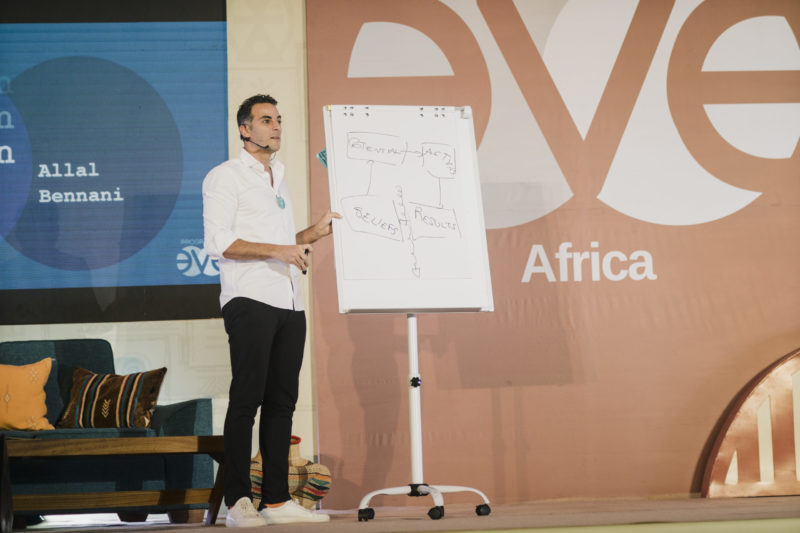At some point or other, for us all, the going gets rough. Some experiences hurt us deeply, leaving us wounded, sometimes even permanently scarred, and can bring about changes to our innermost personalities or prevent us from being the best we can be.
For many years, the emotional fallout from a traumatic experience was treated in the same way as grief, as though something had died within the soul. In the 1990s, the concept of “resilience” began gaining ground, putting a more positive slant on resistance to suffering and suggesting that it’s possible to endure hardship and come out stronger, having learned a lesson from the experience.
But what exactly does “resilience” really mean? Where did the idea originate? How can we develop our own resilience? What criticism has the concept of resilience received? Let’s take a look.
From physics to ecology and computer science: a metaphor for regenerative flexibility
Resilience derives from the Latin word resilio, which means “jump back”. So etymologically speaking, resilience is the ability to bounce back.
The term was first coined in physics to describe the energy absorbed by a material when it changes shape. When you twist a piece of metal or plastic without breaking it, you may have noticed that it gives off heat. Energy is produced and diffused when an object is subjected to violence.
The physics metaphor is also used in computer terminology to describe a system’s ability to go on functioning, despite a failure: an app may crash, but it doesn’t send the entire machine up in flames, or even prevent other features from working properly. The system resists internal flaws and allows you to reboot and recover your files, possibly even repairing the damage from when the app crashed.
The field of environmental sciences also uses the concept of resilience: when a species is threatened, the whole ecosystem is sent off kilter; but if the species is reintroduced and/or protected, its entire surroundings begin regenerating. For example, our ocean floors have been devastated by deep-sea fishing, but when the most destructive of these methods are banned, animal and plant diversity can recover.
Why do some people recover from painful experiences better than others?
The idea of resilience cropped up in the lexicon of psychology and personal development during the 1940s, in works by Emmy Werner & Ruth Smith. These two Californian professors studied the behavior of children who had endured traumatic experiences and found that some people are better than others at overcoming hardship. Their hypothesis was that the variation in people’s ability to recover after painful experiences depends on the individual’s personal qualities (whether innate or acquired through socialization) and on the environment in which they grow and develop.
To confirm their ideas they decided to carry out a thirty-year study on a group of 698 Hawaiian children, all born in 1954. At the end of this extensive fieldwork, they drew three main conclusions:
– As they had suspected, the human ability to cope with an ordeal varies from person to person. Individuals who have developed a good level of self esteem, autonomy, and trust, those who have been raised to find their own answers (there are no problems, only opportunities!), and those with social skills and a sense of altruism recover more quickly and more effectively than people who have not honed such skills.
– Their second hypothesis was also confirmed: a secure, warm and loving environment with a clear and reassuring framework in which each person is treated with respect has a hugely positive impact on our ability to recover from a traumatic experience.
– But where their work goes further is that it shows how individuals who have been able to overcome trauma actually turn out to be stronger than they were prior to the ordeal.
Resilience is therefore the ability to activate your own resources and those you draw from a positive environment to help you overcome a painful experience.
Cyrulnik’s Tree of Life
The concept of resilience became incredibly popular when the neuropsychiatrist Boris Cyrulnik got a hold of it, not referring to the works of Emmy Werner & Ruth Smith but rather those of the British psychoanalyst John Bowlby, one of the pioneers of attachment theories, along with Winnicott and Lorenz.
Bowlby defined resilience as a “mental spring” that is rooted in a person’s innermost self. This spring – which the psychoanalyst suggested is acquired through a strong mother-child bond that generates a sense of lasting security – may have the power to delay (or even prevent) upsetting experiences and more generally to create individuals who never give up.
Cyrulnik wondered if there might be a gene for resilience which would make some lucky individuals intrinsically better equipped to withstand hardship. He suggests that serotonin (“the happiness hormone”) and its neuronal vectors may have a role to play in an individual’s ability to cope with traumatic events, and to recover from them afterwards.
Alongside his scientific research on a possible biological essence for resilience, Cyrulnik popularized the concept by positioning it as a field for personal development. Even people who are not the naturally gifted at repairing and strengthening their characters can learn the skills for resilience. This brought a ray of hope to all those struggling with demons from the past, and his Tree of Life idea put forward an optimistic philosophy: a tree with a broken branch can not only continue growing normally where it remains unbroken, but can also produce buds and young shoots where it had been cut down in the past. Injuries are inevitable, but there is no need for them to stop us from living life to the full, provided we care for ourselves!
How can we develop our resilience?
For Cyrulnik, Bowlby’s spiritual son, attachment is the key to building resilience skills. However, it’s not just about the parent-child relationship of our early childhood: building bonds of trust and solidarity throughout our lives increases our ability to prevent the risk of trauma and to recover if it does occur. He gives an example of a soldier in a war who, if he or she is a member of a solid group, is less at risk from post-traumatic stress disorder on their return than if he or she is alone in combat.
Then comes acceptance. Of both the painful truth and the suffering it generates. In other words, denial is the worst enemy of resilience! Conversely, awareness is objectively beneficial. There is no point in trying to convince yourself that a traumatic event isn’t “all that serious” if you are struggling with acute pain. Grief, anger, and fear are normal reactions, and the ability to deal with them depends on our emotional intelligence.
Finally, there is action: why not make trauma an opportunity for empowerment? For example, taking on responsibility within an association that defends the rights of the sick can help to remedy a mental condition that is akin to physical suffering from a disease. We can also shift the motivation for an action: don’t commit to a cause that is directly linked to a painful experience; it’s much better to find something that has meaning for you on a personal level. It may also be an opportunity to uncover hidden skills, which is a great way to restore self-confidence.
From praise of resilience to the rhetoric of the “anti-victim”?
But we won’t stop at direct criticism of the personality and works of Cyrulnik, whose media and commercial success has given rise to as much admiration as it has attracted criticism and challenges to his legitimacy. It’s better to take a look what effect we have when we’re tempted to defend the idea of resilience at any cost, almost to the point where it’s compulsory to be doing well! When things aren’t going smoothly, it’s easy to become frustrated or angry with those who can’t bounce back as quickly or as well as they “should”. Here we’re examining how victims are considered.
In this respect, the word “victim” is very ambiguous. It might mean someone who uses their painful past to manipulate others, seeking to attract inappropriate affection or even unfair special treatment. Or it might mean someone that has allowed themselves to become dysfunctional by apologizing excessively for the trauma they have suffered. So victims of harassment become stalkers, or an abused child becomes violent later in life. But without falling into the trap of determinism or creating a self-fulfilling prophecy, it’s important to consider that trauma affects personality and behavior, as demonstrated by Werner and Smith, to understand the impact of empathy on people, and to take into account how traumatic experience may have affected someone in order to improve your relationship with them.
In everyday language, the word “victim” has become synonymous with a refusal to see the real person. When we offer words of encouragement to get the person back in the saddle, not to give up, to take their destiny into their own hands rather than wasting time lamenting their fate we can push them into ignoring their true feelings and above all into making as little noise as possible in the hopes that they won’t bring everybody else down! So it’s a two-edged sword for victims: they suffer from what has affected them originally, then find themselves silenced and possibly disparaged for their supposed lack of courage and ability to bounce back. This goes completely against the idea of resilience, which is about giving victims the time to recover and work on repairing themselves.
Marie Donzel, for the EVE webmagazine. Translated from French by Ruth Simpson.






